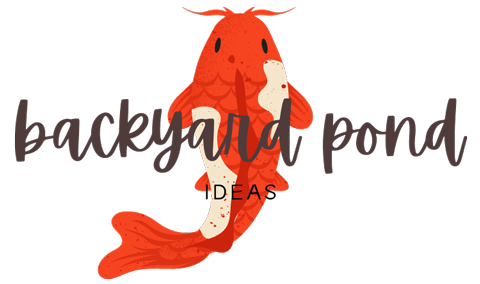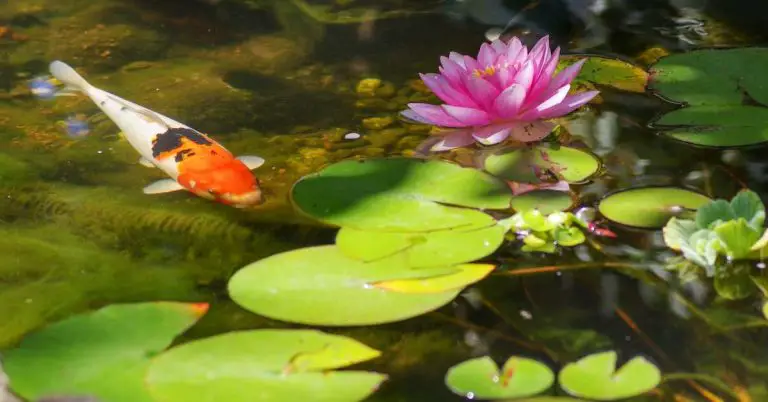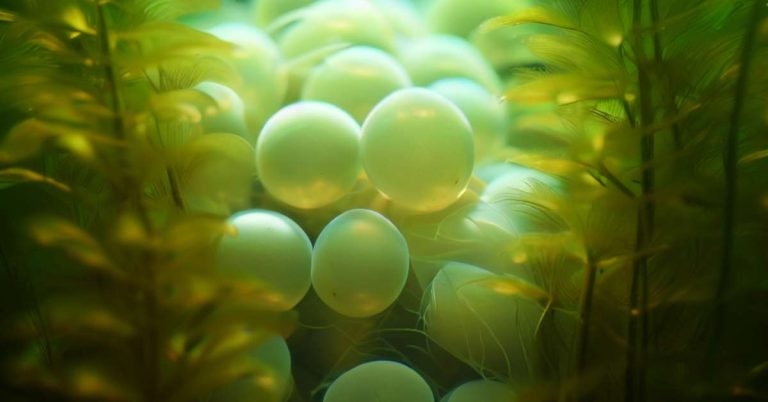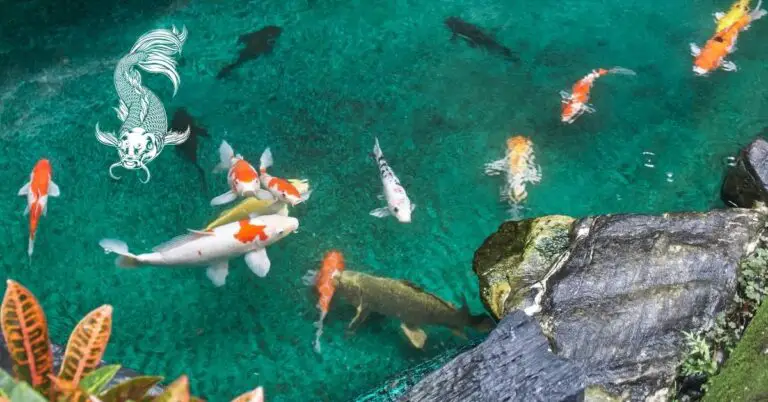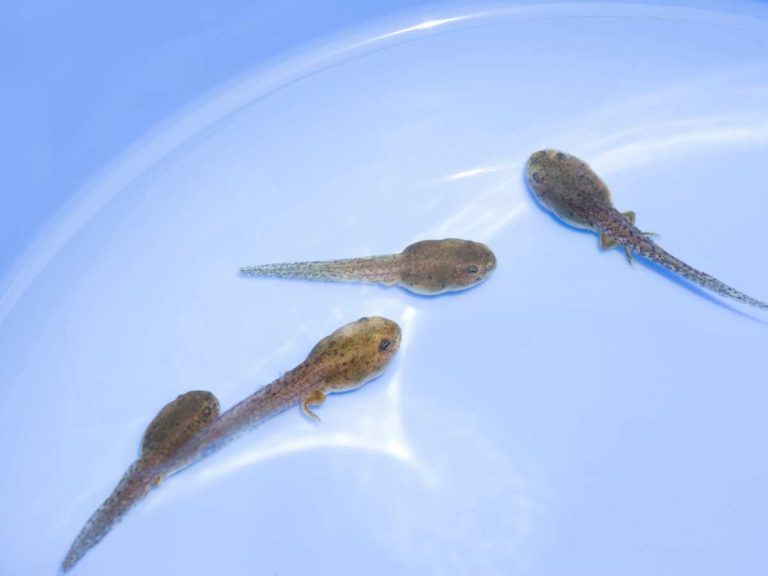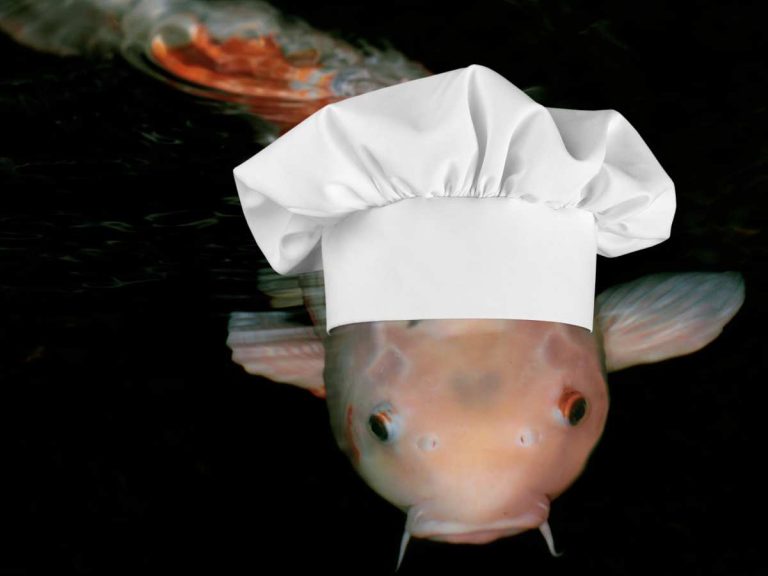Complete Koi Ich Treatment Guide: Effective Treatment & Tips for Healthier Fish
Ever noticed tiny white spots dotting your koi, making them look like they’ve been sprinkled with salt? That’s Ich, a pesky parasite that’s more than just a cosmetic issue.
Commonly known as ‘white spot disease’, Ich can wreak havoc in freshwater aquariums. This microscopic menace invades the outer layer of fish, causing irritation, gill damage, and even respiratory distress. Left untreated, it can lead to a significant fish loss.
But the battle against Ich isn’t insurmountable. With a combination of medication, environmental adjustments, and preventive measures, you can restore the health of your aquatic environment. Dive into our comprehensive guide to understand, treat, and prevent this aquatic adversary.
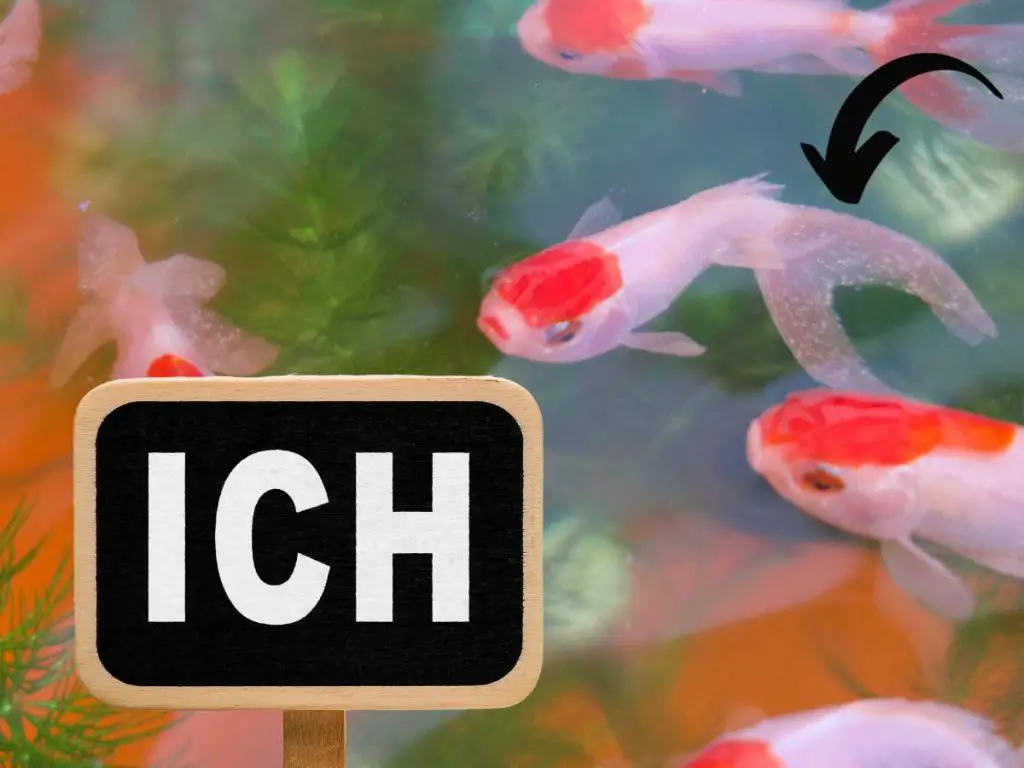
How Quickly Does Ich Kill Fish?
Ich, scientifically known as Ichthyophthirius multifiliis or simply “Ick” and “white spot disease,” is a notorious parasitic infection prevalent among aquarium fish. This ailment manifests as tiny white spots on the fish’s skin, gills, and fins (more on the infection below).
The life cycle of the ich parasite can span from three days to several weeks, influenced by environmental factors like temperature, pH levels, and water quality.
If left untreated, the parasite can lead to the demise of the infected fish within just a few days. This rapid fatality results from the stress the fish undergoes due to the parasite’s attack or the damage inflicted on their gills, impairing their breathing.
The severity of the disease and its rapid progression underscore the importance of early detection and immediate intervention. Fish enthusiasts should be vigilant and take prompt action upon spotting symptoms of Ich to prevent its spread and potentially save the lives of the affected fish.
It’s worth noting that if Ich is not addressed in its early stages, it can decimate an entire tank in as little as two weeks. Therefore, regular monitoring and immediate treatment are crucial for the well-being of the aquarium’s inhabitants.
Understanding Ich
| Ich Symptom | Description |
|---|---|
| White spots | Tiny white cysts on the fish’s skin, gills, and fins. |
| Clamped fins | Fins are held close to the body rather than being fanned out. |
| Rubbing against objects | Fish may scratch themselves on decorations, substrate, or the sides of the tank. |
| Rapid breathing | Increased gill movement, indicating possible gill irritation. |
| Lethargy | Reduced activity levels and general sluggishness. |
| Loss of appetite | Fish may refuse food or eat less than usual. |
Ich is a parasitic disease that affects koi fish and other fish. It is caused by a protozoan parasite called Ichthyophthirius multifiliis, which attaches itself to the fish’s skin and gills. This parasite feeds on the fish’s blood and causes irritation, leading to the formation of white spots or cysts on the fish’s body.
Almost all freshwater fish can contract ich if exposed to it, especially when they are stressed, which can make them more susceptible to infections. Common aquarium fish such as goldfish, tetras, guppies, cichlids, and catfish, among others, can all be affected by ich.
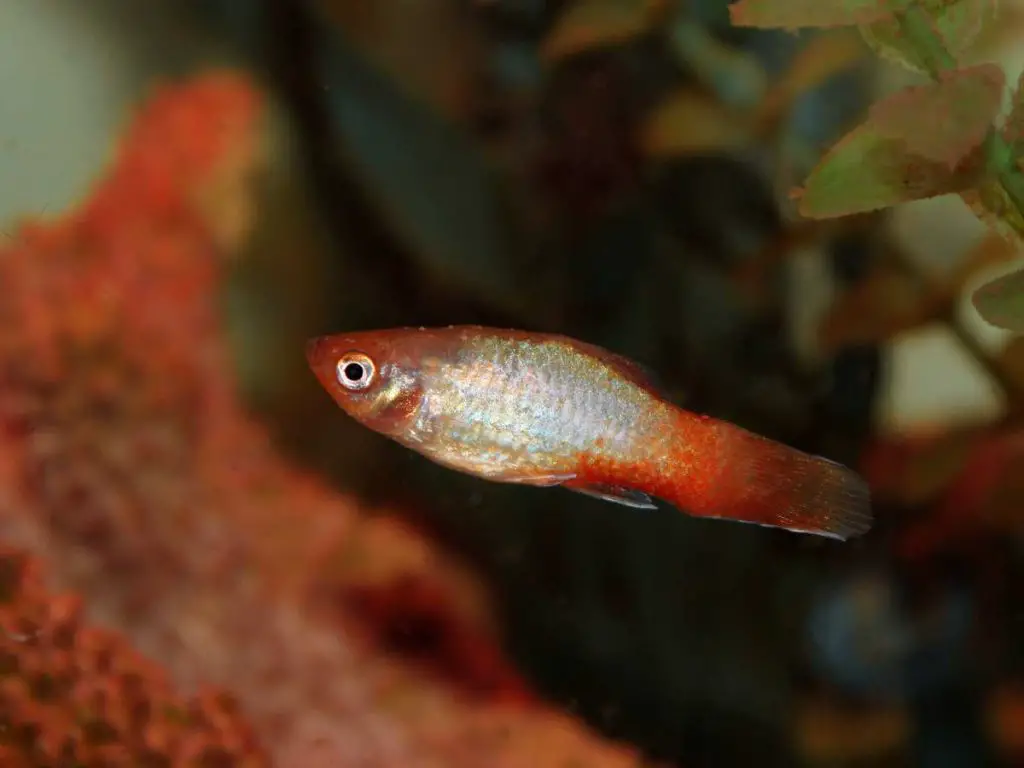
Like we’ve covered, Ich can be extremely damaging to you koi fish (and others) if not treated promptly, as it weakens their immune system and can eventually lead to death.
In saltwater environments, a similar-looking but different disease caused by the parasite Cryptocaryon irritans affects marine fish. This disease is often referred to as “marine ich” or “white spot disease” and, while it shares some similarities with freshwater ich, the treatment and life cycle differ.
Symptoms of Ich in Koi Fish
It’s crucial for aquarium hobbyists to be familiar with ich, its symptoms, and treatment methods, given its widespread nature and potential to affect various fish species.
If you suspect that your koi fish may be infected with Ich, there are several symptoms to look out for. The most common sign is the presence of white spots or cysts on the fish’s body. These spots may look like grains of salt or sugar and can appear on the fins, body, or gills. Infected fish may also exhibit behavior changes, such as excessive scraping against objects in the pond or gasping for air at the water’s surface.
Additionally, infected fish may experience a loss of appetite, lethargy, and reduced activity levels.
Remember, Ich is one of the most common and persistent parasites found in aquariums. While the characteristic white spots on a fish’s body and gills are the most noticeable sign, there are other symptoms that can indicate an Ich infestation:
- White Spots: These are the actual parasites and appear like grains of salt or sugar sprinkled on the fish’s body and gills.
- Clamped Fins: Fish with Ich often keep their fins close to their bodies, a behavior known as “clamped fins.”
- Rubbing Against Objects: Infected fish frequently rub or scratch themselves against gravel, plants, or other objects in the tank due to the irritation caused by the parasites.
- Rapid Breathing: As the gills are often heavily infested, fish may exhibit rapid or labored breathing.
- Lethargy: Fish affected by Ich may become less active, often staying in one part of the tank or hiding away.
- Loss of Appetite: Infected fish might eat less or even refuse food altogether.
Understanding the Life Cycle of Ich Parasite
To effectively treat Ich in koi fish, it is essential to understand the life cycle of the parasite.
The life cycle consists of various stages, including the free-swimming stage (known as a tomont), the reproductive stage (known as a theront), and the encysted stage. During the free-swimming stage, the parasite searches for a host fish to attach itself to. Once attached, it feeds on the fish’s blood and eventually falls off to reproduce. The theronts then go on to form cysts on the fish’s body before eventually detaching and falling to the bottom of the pond to reproduce once again.
It is crucial to interrupt this life cycle to prevent further infestation and successfully treat Ich in koi fish.
Diagnosing Ich in Koi Fish
Diagnosing Ich in koi fish can be challenging, but with careful observation and examination, you can determine if your fish are infected. One of the most obvious signs of an Ich infection is the presence of white spots or specks on the fish’s body and fins. These spots may resemble grains of salt or sugar, and they can be quite visible, especially on darker-colored koi.
To confirm the presence of Ich, gently net the affected fish and use a magnifying glass to inspect its body. Look closely at the fins, gills, and the areas around the eyes for any signs of white spots. Sometimes, the spots may not be visible to the naked eye, so the magnifying glass will come in handy.
Signs to look for in infected fish
In addition to the white spots, infected koi fish may exhibit other symptoms that indicate an Ich infection. These include increased flashing or rubbing against objects in the pond, lethargy, loss of appetite, and rapid gill movement. Fish infected with Ich may also have frayed fins, faded colors, or appear to be gasping at the water’s surface.
It’s important to note that these symptoms can also be indicative of other health issues, so a thorough examination is crucial for accurate diagnosis. Observing the fish’s behavior and overall appearance over a period of time will help you determine if Ich is the cause of the issues.
Conduct a thorough examination of the fish
To properly diagnose Ich, it’s essential to conduct a thorough examination of the fish. This involves inspecting not only the visible signs of the parasite but also observing the fish’s overall condition. Look for any wounds, sores, or abnormalities on the body and fins, and check for any signs of inflammation or redness. Additionally, observe the fish’s behavior and note any unusual swimming patterns or changes in feeding habits.
It’s also important to consider the environmental conditions of the pond, such as water temperature and quality. Fluctuations in these factors can stress the fish and make them more susceptible to Ich infections. By considering all these aspects, you can make a more accurate diagnosis and proceed with the appropriate treatment.
Consulting with a Veterinarian
While there are numerous resources and guides available that offer advice on diagnosing and treating ich in fish, it’s crucial to remember that each case can be unique.
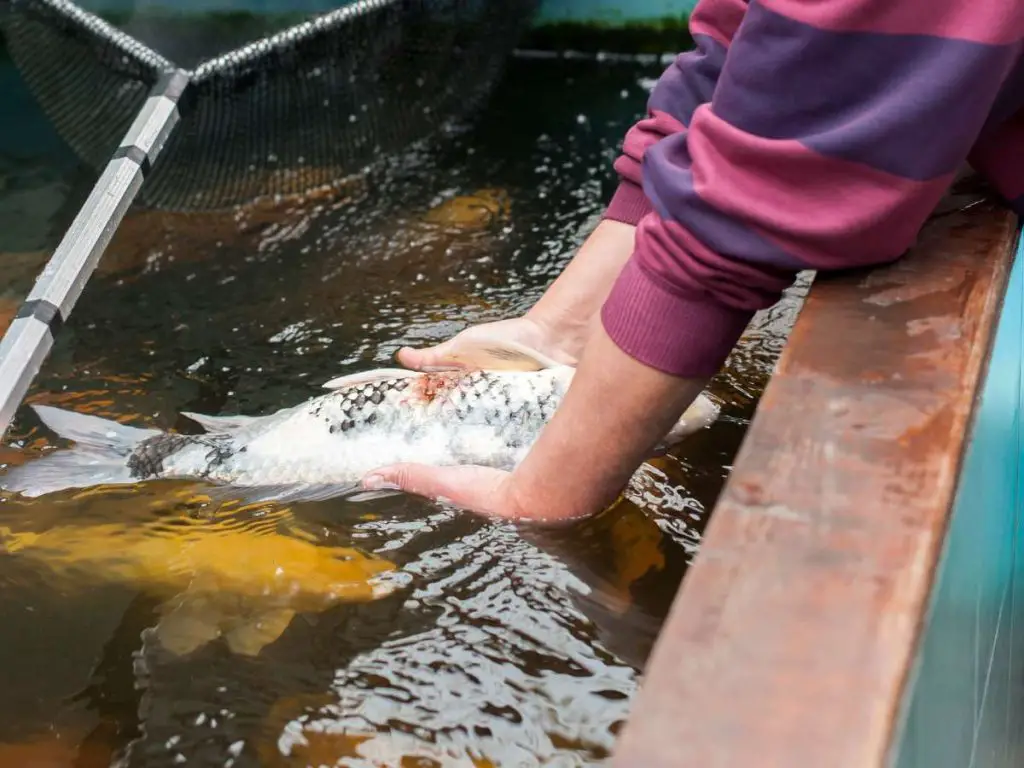
A veterinarian, especially one specializing in aquatic animals, possesses the expertise to provide a definitive diagnosis and recommend the most suitable treatment tailored to your fish’s specific needs. Self-diagnosing and treating based solely on online information can sometimes lead to misdiagnosis or the use of inappropriate treatments, potentially exacerbating the problem.
By consulting with a vet, you ensure that your fish receives the best care possible, increasing its chances of a swift and full recovery. Remember, the health and well-being of your aquatic pets should always be a top priority, and seeking professional advice is a step in the right direction.
Treatment Options for Ich in Koi Fish
Successfully treating Ich requires a multifaceted approach.
| Treatment | Description |
|---|---|
| Salt treatment | Increasing the salinity of the water can disrupt the life cycle of the ich parasite. |
| Formalin and malachite green | A combination treatment effective against ich. Can be toxic in high concentrations. |
| Copper-based treatments | Effective against various parasites, including ich. Should be used with caution as it can be toxic. |
| UV sterilizers | UV light kills free-swimming ich parasites, reducing their numbers in the aquarium. |
| Veterinary consultation | Seeking advice from a vet ensures accurate diagnosis and the most suitable treatment for your fish. |
When treating Ich, it’s essential to raise the aquarium’s temperature gradually to speed up the life cycle of the parasite, making it more susceptible to treatment. However, always ensure that the temperature is within a range that’s safe for the fish.
Additionally, it’s crucial to maintain good water quality, as this can reduce stress on fish and make treatments more effective.
Here are some of the most effective treatments:
- Salt Treatment: Adding aquarium salt can help in the treatment of Ich. The salt acts as a general tonic and stress reducer for fish. It’s important to ensure the correct dosage and to monitor fish for any signs of distress.
- Formalin and Malachite Green: This combination is one of the most effective treatments for Ich. Formalin helps in killing the parasites, while malachite green assists in preventing their reproduction. However, they can be harmful to some fish and plants, so it’s crucial to follow the recommended dosage.
- Copper-based Treatments: Copper is toxic to Ich and can be used to treat the disease. However, it’s essential to use the correct concentration and to be aware that some fish species are sensitive to copper.
- UV Sterilizers: Ultraviolet sterilizers can kill free-swimming Ich parasites. While they won’t directly treat fish that are already infected, they can prevent the spread of the disease in the tank.
Medications for treating Ich
If you’ve confirmed that your koi fish have been infected with Ich, it’s crucial to start treatment as soon as possible. There are several medications available that can effectively eliminate Ich from your fish. One popular option is malachite green, which can be found in liquid or powder form. To use malachite green, you’ll need to dilute it in water according to the instructions provided. Then, immerse the infected fish in the solution for the prescribed amount of time.
Another commonly used medication is formalin, which is also available in liquid or powder form. Like malachite green, you’ll need to follow the instructions for dilution and immersion. It’s important to note that some medications may stain the water or fish temporarily, but this is usually harmless and will fade over time.
Natural remedies and alternative treatments
In addition to medications, there are also natural remedies and alternative treatments that can be effective in treating Ich in koi fish. One option is the use of salt baths, where you add a specific amount of salt to a separate tank of water and transfer the infected fish to soak in the solution. Salt baths can help to kill the Ich parasites and ease the symptoms in the fish.
Another alternative treatment is the use of herbal or botanical additives, which contain natural ingredients that are known to have antiparasitic properties. These additives can be added to the pond water to help combat the Ich parasites and support the fish’s immune system.
However, it’s important to choose additives that are specifically formulated for koi fish and follow the recommended dosage. Again, a vet or fish specialist should be able to direct you properly.
Steps to take when administering treatment
Regardless of the treatment option you choose, there are a few important steps to follow when administering treatment for Ich in koi fish.
First, it’s CRUCIAL to isolate the infected fish from the rest of the pond inhabitants. This can be done by placing them in a separate quarantine tank or pond.
Next, follow the instructions provided with the medication or treatment product to ensure you’re using the correct dosage and administration method. It’s important to carefully measure and mix the medication according to the instructions and follow the recommended treatment duration.
Prevention and Control of Ich in Koi Ponds
One of the key factors in preventing an Ich outbreak in your koi pond is maintaining optimal water quality. This means regularly testing the water parameters such as temperature, pH, ammonia, nitrate, and nitrite levels. Ideally, the temperature should be kept between 65-75 degrees Fahrenheit, pH level should be within the range of 7-8, and ammonia, nitrate, and nitrite levels should be consistently monitored and kept at safe levels.
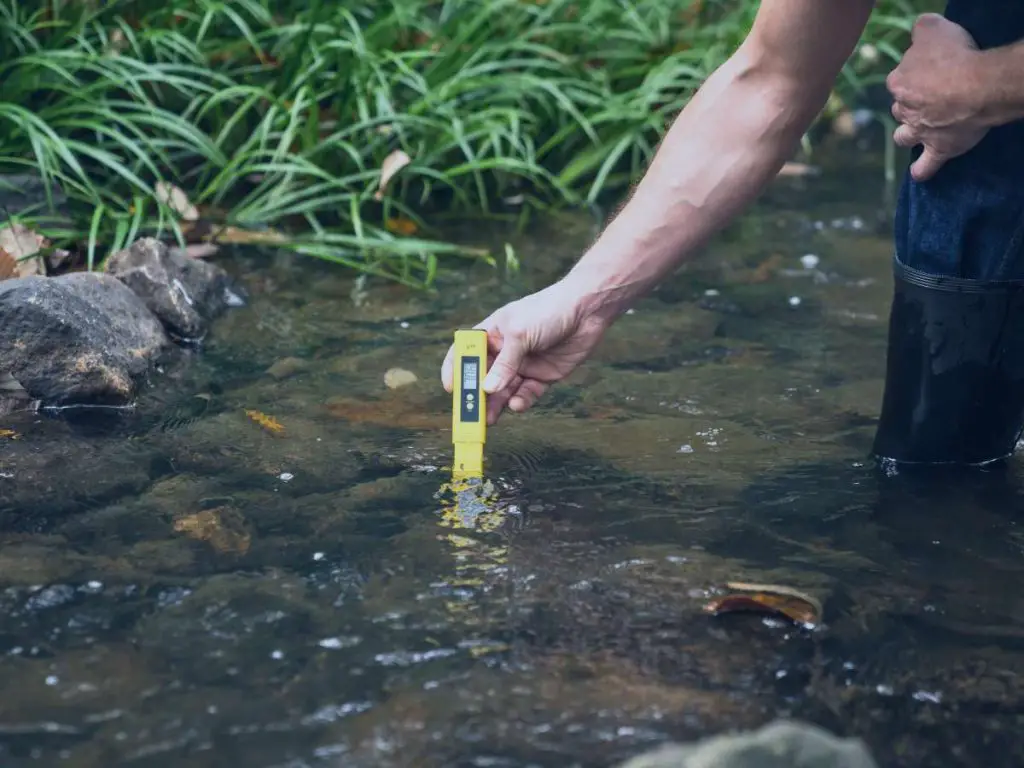
Regular water changes are also crucial to maintain good water quality. Aim for weekly water changes of about 10-20% to keep the water clean and reduce the risk of Ich infestation. Additionally, consider installing a good quality filtration system that can effectively remove waste, toxins, and parasites from the water.
Reducing Stress and Boosting Immune System
Stressed fish are more susceptible to Ich, so it’s important to reduce stressors in your koi pond. One way to do this is by providing adequate hiding places or shelter for the fish, such as plants, rocks, or tunnels. These hiding spots help create a sense of security for the fish, making them less prone to stress.
A balanced and nutritious diet is also crucial for boosting the immune system of your koi fish. Provide them with high-quality food that is specifically formulated for koi, and avoid overfeeding. An overfed fish produces more waste, which can negatively impact water quality and stress the fish.
Filtration and Quarantine Practices
Proper filtration is essential in preventing the spread of Ich in your koi pond. A good filtration system helps remove debris, excess food, and waste, reducing the chances of an Ich outbreak. Consider using a combination of mechanical, biological, and chemical filtration methods to ensure the best results.
Quarantine practices are also crucial to prevent introducing Ich and other diseases into your koi pond. Before adding new fish to your pond, it’s recommended to quarantine them in a separate tank for at least four weeks. During this quarantine period, monitor the fish closely for any signs of Ich or other diseases. This step can help prevent the spread of Ich to your existing fish population and allow you to treat any infected fish before introducing them to the main pond.
Step-by-step guide on how to handle an Ich outbreak in a koi pond
Dealing with an Ich outbreak can be a daunting task, but with the right approach, you can effectively manage the situation and keep your koi fish healthy.
Here’s a step-by-step guide on how to handle an Ich outbreak in a koi pond:
Step 1: Isolating infected fish and preventing further spread
When you first notice signs of Ich in your koi fish, it’s crucial to quarantine the infected individuals immediately. Separate them from the healthy fish to minimize the risk of spreading the parasite. You can use a separate quarantine tank or pond for this purpose. Remember to handle the infected fish and healthy fish separately to avoid cross-contamination.
Step 2: Water treatment and maintenance during an outbreak
Cleanliness is key when it comes to managing an Ich outbreak. Increase the frequency of water changes to maintain optimal water quality. It’s recommended to perform daily water changes of at least 20% during the outbreak period. Use a siphon or a pond vacuum to remove any debris or uneaten food that may harbor the Ich parasite. Also, consider adding a UV sterilizer to your filtration system to kill the free-swimming Ich parasites in the water.
Step 3: Medication and treatment administration
Consult with a veterinarian or a fish health professional to determine the most appropriate medication for treating Ich in your koi fish. Follow the dosage and administration instructions provided by the manufacturer carefully. Treat the infected fish in the quarantine tank or pond, and continue the treatment for the recommended duration. Monitor the progress of the treatment and adjust accordingly if necessary.
Step 4: Monitoring and observing the fish
During the Ich outbreak, keep a close eye on the infected fish for any changes in their condition. Monitor their behavior, appetite, and physical appearance. If you notice any worsening symptoms or complications, seek professional advice promptly. Patience and diligence are crucial in successfully managing an Ich outbreak.
Other Considerations for Ich Treatment
When it comes to treating Ich in koi fish, it’s important to be aware of the potential risks and side effects associated with different treatment methods. Some medications or chemicals used to treat Ich can be harsh on the fish and may have adverse effects on their health. Therefore, it’s crucial to carefully consider the pros and cons of each treatment option before proceeding (and again, consider consulting with a fish health professional).
For example, certain medications may cause stress or irritation to the koi fish, leading to additional health issues. In some cases, the treatment may even result in temporary or permanent damage to the fish’s gills or fins. It’s essential to closely monitor the fish during and after treatment and seek professional advice if any concerning side effects occur.
Common mistakes to avoid during Ich treatment
When dealing with an Ich outbreak, it’s easy to make mistakes that can hinder the treatment process or exacerbate the situation. One common mistake is underdosing medication. It’s crucial to follow the recommended dosage instructions carefully and administer the correct amount of medication. Underdosing can be ineffective, allowing the Ich parasite to persist and spread.
Another mistake to avoid is rushing the treatment process. Treating Ich requires patience and consistency. It’s important to complete the full treatment cycle, even if the symptoms start to improve. Discontinuing treatment too early can lead to a relapse or resistance to the medication, making future treatment more challenging.
Factors to consider when choosing the most appropriate treatment option
When it comes to choosing the right treatment option for Ich in koi fish, several factors need to be considered. Firstly, the severity of the infection should be assessed. If the Ich outbreak is in its early stages and only a few fish are affected, milder forms of treatment such as natural remedies or salt baths may be sufficient.
Additionally, the existing water parameters and quality should be taken into account. Some medications may have specific requirements or can affect the water chemistry, so it’s crucial to ensure compatibility with the pond environment. Furthermore, the overall health and condition of the koi fish should be considered. If the fish are already weakened or experiencing other health issues, a less aggressive treatment approach may be more appropriate.
Can fish recover from ick? Yes – if you treat it properly!
Fish can absolutely recover from ich when it’s detected early and treated promptly and effectively.
The key to recovery is early detection and swift intervention. During and after treatment, maintaining good water quality, reducing stressors, and providing a balanced diet can further enhance the fish’s chances of full recovery. However, it’s worth noting that while many fish can recover with appropriate care, severe infestations can be fatal, especially if not addressed in time.
In the world of aquatics, Ich is a formidable foe, but with vigilance and the right tools, it’s a battle you can win. Early detection is your best ally, and a proactive approach to water quality and fish care can keep this parasite at bay. Remember, a healthy tank is not just about clear water, but also about ensuring the well-being of its inhabitants. Stay informed, stay prepared, and keep your aquatic friends Ich-free!
Related Ich Questions
Can Ich be transferred from koi fish to other types of fish in the same pond?
Yes, Ich can be transferred from koi fish to other types of fish in the same pond. The parasite can easily spread through direct contact or contaminated water. It is important to quarantine any infected fish and take necessary precautions to prevent the Ich from spreading to other fish in the pond.
Can Ich be completely eliminated from a koi pond?
Yes, it is possible to eliminate Ich from a koi pond with proper treatment and management. However, it requires a comprehensive approach that includes treating infected fish, addressing the underlying causes of the outbreak, and maintaining optimal water quality. It is important to closely monitor the pond and take preventive measures to minimize the risk of future Ich outbreaks.
